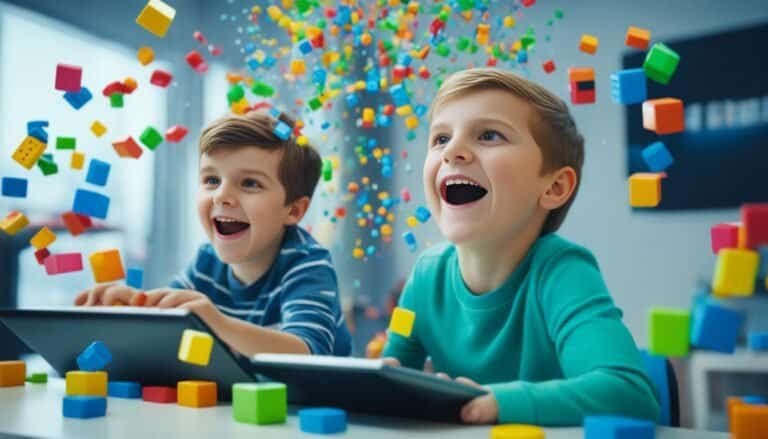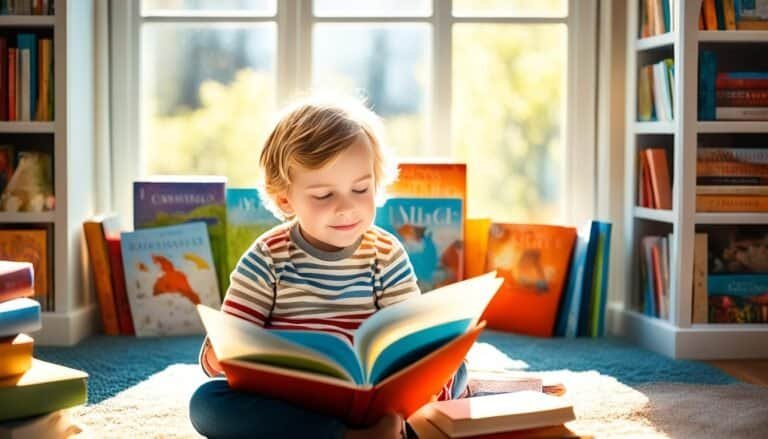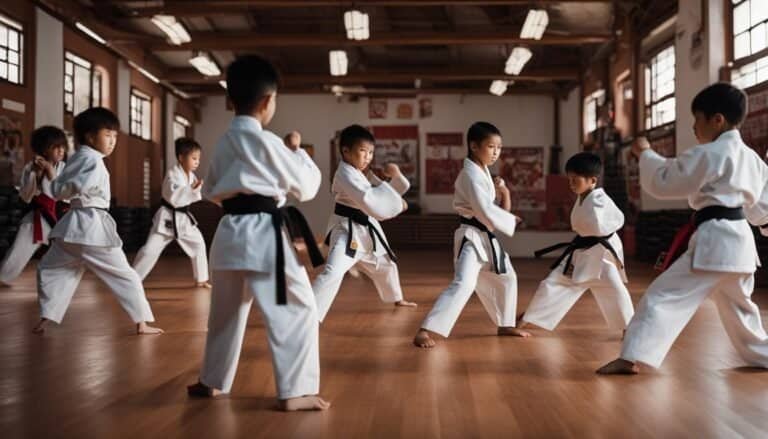Art Therapy for Kids: Benefits and Techniques
|
Getting your Trinity Audio player ready...
|
Art therapy is a form of therapy that uses creative expression, such as drawing, painting, and crafting, to help children explore their emotions, process difficult experiences, and improve their overall well-being. It has been shown to benefit children of all ages, including those with special needs, by enhancing their development, improving social skills, and promoting emotional growth. Art therapy can be conducted in various settings, including schools, clinics, and private practices, and can be tailored to meet the unique needs of each child.
Key Takeaways:
- Art therapy uses creative expression to help children explore their emotions and improve their well-being.
- It benefits children of all ages, including those with special needs.
- Art therapy can be conducted in schools, clinics, and private practices.
- It enhances development, improves social skills, and promotes emotional growth.
- Art therapy is tailored to meet the unique needs of each child.
What is Art Therapy for Kids?
Art therapy for kids is a therapeutic approach that utilizes different art mediums and techniques to facilitate self-expression, communication, and emotional healing. Through the creative process, children can explore their thoughts and feelings, convey emotions that are difficult to express verbally, and gain insight into their experiences. This form of therapy provides a safe and supportive environment for children to engage in art activities that promote relaxation, self-reflection, and personal growth.
Art therapy activities for children encompass a wide range of artistic endeavors, including drawing, painting, collage, and sculpture. These activities can be both structured, with guided exercises and specific therapeutic techniques, and unstructured, allowing for free expression and exploration. Key techniques used in art therapy for kids may include mandala drawing, journaling, and other therapeutic interventions that encourage self-reflection and emotional processing.
Benefits of Art Therapy for Kids
Art therapy offers numerous benefits for children, enhancing their emotional well-being, cognitive development, and social skills. Through art therapy, children can:
- Express their emotions and thoughts in a non-verbal and creative way.
- Gain a deeper understanding of themselves and their experiences.
- Improve emotional regulation and self-esteem.
- Enhance problem-solving, decision-making, and critical thinking skills.
- Develop social skills, build relationships, and improve communication.
“Art therapy activities for children can provide a safe and supportive environment for emotional expression, creativity, and personal growth.”
Moreover, art therapy for kids can be particularly beneficial for children with special needs, as it allows them to communicate, express their unique experiences, and foster a sense of inclusion and acceptance.
Art therapy activities for children promote relaxation, self-reflection, and personal growth. By engaging in creative expression, children can better understand their thoughts, feelings, and experiences, while also developing essential emotional and cognitive skills. In the next section, we will explore the specific benefits of art therapy for children in more detail.
Benefits of Art Therapy for Children
Art therapy offers numerous benefits for children, providing a wide range of positive outcomes that promote their emotional well-being and overall development. Through engaging in creative expression, children can tap into their inner world, explore their emotions, and develop essential skills in a supportive and non-judgmental environment.
Promotes Social Skills and Relationships
Art therapy interventions for kids create a safe space for children to interact with others, express themselves, and build relationships. By engaging in art activities together, children learn to communicate, collaborate, and develop empathy. This social interaction is crucial in helping children enhance their social skills and establish meaningful connections with their peers. Through the process of creating art, they learn to navigate social dynamics and express their thoughts and emotions effectively.
Enhances Cognitive Development
Art therapy for children stimulates cognitive development by promoting problem-solving, decision-making, and critical thinking skills. When children engage in art-making, they are encouraged to explore different materials, experiment with various techniques, and find creative solutions to artistic challenges. These activities foster cognitive flexibility, imagination, and innovation, which are essential for their overall cognitive growth and academic success.
Improves Emotional Regulation and Self-Esteem
Art therapy has shown to be highly effective in improving emotional regulation, self-esteem, and self-confidence in children. Through art, children can express and process their emotions in a tangible and non-verbal way. Art therapy provides a safe outlet for children to explore challenging emotions, such as anger, sadness, or fear, and develop healthy coping mechanisms. This process allows children to gain a sense of control over their emotions, build resilience, and develop a positive self-image.
Supports Children with Special Needs
Art therapy interventions for kids with special needs offer a unique and inclusive approach to therapy. Art provides a universal language that allows children with diverse abilities to communicate and express themselves effectively. For children with special needs, art therapy can be particularly beneficial in helping them overcome communication barriers, develop fine motor skills, and express their unique experiences and perspectives. It provides a safe and non-judgmental space for self-expression, contributing to their overall well-being and quality of life.
Art therapy opens up a world of possibilities for children, offering a holistic approach to their emotional and cognitive development. By harnessing the power of creativity, art therapy helps children build valuable skills, express themselves authentically, and navigate the complexities of their emotions. Whether children participate in formal art therapy sessions or engage in creative activities at home, the benefits they reap can be transformative, setting the stage for a brighter and more resilient future.
Art Therapy Techniques for Kids
Art therapy offers a range of techniques that can be used to help children express themselves, process their emotions, and promote emotional healing. One effective approach is expressive arts therapy for children, which combines various creative outlets to facilitate self-expression and emotional growth.
Expressive arts therapy for children involves incorporating different art forms, such as painting, music, movement, and drama, into the therapeutic process. By engaging in these creative activities, children can tap into their inner thoughts and emotions, giving voice to their experiences in a non-verbal and symbolic manner.
“Art allows children to communicate their deepest thoughts and feelings in a safe and non-threatening way. It gives them a voice and a means of self-expression.”
Guided imagery is another powerful art therapy technique for kids. It involves using visualization techniques to explore their imagination and create mental images that reflect their thoughts and emotions. This technique can be used to help children process traumatic experiences, develop coping strategies, and promote relaxation and self-reflection.
Storytelling is yet another art therapy technique that can be effective in helping children express themselves. Children can create and share stories through various mediums, such as drawing, writing, or using puppets. Storytelling allows them to explore their own narratives, address challenges, and develop a sense of empowerment and resilience.
Benefits of Art Therapy Techniques for Kids:
- Facilitates self-expression and emotional healing
- Promotes relaxation, self-reflection, and personal growth
- Enhances communication and social interactions
- Helps develop coping skills and resilience
- Provides a safe and non-judgmental space for emotional exploration
One particularly engaging and creative technique is sandplay therapy. This technique involves using a tray filled with sand and various small objects for children to create scenes or stories. By manipulating the sand and objects, children can express their emotions, explore their inner world, and gain insights into their experiences.
| Technique | Description |
|---|---|
| Expressive Arts Therapy | A multidisciplinary approach combining different creative outlets to promote self-expression and emotional healing. |
| Guided Imagery | Using visualization techniques to help children explore their imagination and process their thoughts and emotions. |
| Storytelling | Creating and sharing stories through various mediums to address challenges and develop a sense of empowerment. |
| Sandplay Therapy | Using a tray filled with sand and small objects to allow children to express their emotions and explore their inner world. |
By using these art therapy techniques, children can engage in a creative and therapeutic process that supports their emotional well-being, fosters self-expression, and promotes personal growth.
Art Therapy for Children with Special Needs
Art therapy can be a transformative and invaluable tool for children with special needs. It provides a safe and supportive environment where they can express themselves, improve social skills, and enhance their overall well-being. Through various art activities, children with special needs can engage in a sensory-rich experience that promotes sensory integration, fine motor skills development, and self-regulation.
Arts and crafts therapy for children offers a creative outlet that encourages self-expression and communication. By engaging in hands-on activities, children can explore their emotions, develop cognitive skills, and improve their ability to focus and follow instructions. The tactile nature of arts and crafts therapy can also provide a soothing and calming effect, helping to reduce anxiety and stress.
One of the key benefits of art therapy for children with special needs is its ability to improve communication and social interactions. Many children with special needs may struggle with verbal expression or face challenges in understanding social cues. Through art, children can communicate their thoughts and emotions visually, allowing them to bypass some of the barriers they may face in traditional spoken communication.
Moreover, art therapy fosters a sense of inclusion and acceptance for children with special needs. It provides them with a non-judgmental space to express themselves, build self-esteem, and develop a positive sense of self. The creative process allows children to celebrate their unique abilities and perspectives, fostering a greater appreciation for diversity.
“Art therapy provides a unique way for children with special needs to express themselves and communicate their experiences.”
The Impact of Art Therapy for Children with Special Needs
Art therapy can yield numerous positive outcomes for children with special needs:
- Improved social skills and communication
- Enhanced cognitive development and problem-solving abilities
- Reduced anxiety and stress levels
- Promoted self-regulation and emotional well-being
- Boosted self-esteem and self-confidence
- Fostered a sense of inclusion and acceptance
Through art therapy, children with special needs have the opportunity to express themselves, overcome challenges, build connections with others, and develop a greater sense of self-worth. It empowers them to thrive and reach their full potential.
Incorporating Art Therapy into Everyday Life
While formal art therapy is typically conducted by trained professionals, the principles and activities of art therapy can be seamlessly integrated into everyday life, providing children with ongoing opportunities for self-expression and personal growth. Parents and caregivers play a vital role in fostering this creative environment, encouraging children to explore their artistic and imaginative side through various mediums and activities.
Simple Craft Projects
Engaging in simple craft projects at home can be an excellent way to incorporate art therapy into children’s daily routines. The act of creating something with their own hands can help children develop fine motor skills, concentration, and problem-solving abilities. Craft projects can range from painting, drawing, and coloring to collage making, origami, and sensory art activities.
For children with special needs, consider adapting craft projects to accommodate their unique abilities and interests. Provide them with accessible art materials, such as adaptive brushes or grip aids, to ensure they can actively participate in the creative process.
Exploring Music and Storytelling
Music and storytelling are powerful forms of self-expression and can be incorporated into daily life to enhance emotional well-being and creativity. Encourage children to listen to music, play musical instruments, or engage in singing. This can help them regulate their emotions, express themselves, and improve their auditory skills.
Storytelling can also be a therapeutic activity, allowing children to explore their thoughts, feelings, and experiences. Encourage them to tell stories, write in a journal, or create their own narratives through drawing or puppetry. These activities promote language development, creativity, and emotional expression.
Cultivating a Non-judgmental Environment
“Art is the highest form of hope.” – Gerhard Richter
Creating a non-judgmental and supportive atmosphere is essential for art therapy to thrive in everyday life. Encourage children to freely express themselves through art without fear of criticism or judgment. Display their artwork proudly and celebrate their creativity. Even if the artwork may not be “perfect” or visually pleasing in a traditional sense, focus on the process and the emotional expression it represents.
Incorporating art therapy into everyday life provides children with a continuous outlet for self-expression, emotional exploration, and personal growth. By nurturing their creative abilities and fostering a supportive environment, parents and caregivers can empower children to develop resilience, improve their emotional well-being, and embrace the transformative power of art.
| Benefits of Incorporating Art Therapy into Everyday Life: |
|---|
| Promotes self-expression and emotional exploration |
| Develops fine motor skills and cognitive abilities |
| Fosters creativity and imagination |
| Enhances problem-solving and critical thinking skills |
| Encourages communication and language development |
The Transformative Power of Art Therapy
Art therapy has the power to transform lives. It allows children to tap into their creativity, express their emotions, and gain a deeper understanding of themselves and their experiences. Expressive arts therapy for children can provide a sense of empowerment, self-discovery, and personal growth. It can also help children develop coping skills, resilience, and a positive sense of self.
Art therapy for children with special needs can be particularly transformative, as it provides a unique avenue for self-expression and communication. Through art, children with special needs can overcome challenges, build connections with others, and develop a greater sense of self-worth.
“Art enables us to find ourselves and lose ourselves at the same time.” – Thomas Merton
By engaging in art therapy, children are able to navigate their emotions and experiences in a safe and supportive environment. They can communicate their thoughts and feelings through visual expression, which can be especially beneficial for those who may have difficulty verbalizing their emotions. Art therapy offers a non-judgmental space where children can explore their inner world, process their experiences, and find healing.
Art therapy encourages children to experiment with different art mediums and techniques, which allows for a personalized and individual experience. Whether it’s painting, drawing, sculpting, or any other form of creative expression, the act of making art can be cathartic and empowering for children.
Art therapy for children with special needs can:
- Enhance communication and social skills
- Improve fine motor skills and coordination
- Promote sensory integration
- Boost self-esteem and self-confidence
- Reduce anxiety and stress
Through art therapy, children with special needs can develop a deeper connection with their emotions, as well as build meaningful relationships with others. Art becomes a universal language that transcends barriers, allowing children to express themselves authentically and be understood.
Art therapy has the potential to unlock the hidden strengths and resilience within each child. It fosters self-discovery, personal growth, and a positive sense of self. By harnessing the transformative power of art, we can empower children to rewrite their narratives and create a brighter future.
Art Therapy in Schools
Art therapy in schools has gained significant popularity as an effective method to support children’s emotional well-being while enhancing their academic success. By integrating child art therapy programs into the school curriculum, students are provided with valuable opportunities for creative expression, self-reflection, and personal growth.
Art therapy activities for children in schools encompass a range of approaches, from individual sessions to group therapy and art-based interventions. These activities are specifically designed to address various issues and challenges that children may face, allowing them to explore their emotions and thoughts through artistic means.
When art therapy is incorporated into schools, educators create a nurturing and inclusive environment where children can thrive emotionally, socially, and academically. By embracing child art therapy, schools foster an atmosphere that encourages self-expression, empathy, and personal development.
The Benefits of Art Therapy in Schools
Integrating art therapy into schools brings forth a multitude of benefits for children. Some of these include:
- Enhanced emotional well-being: Through engaging in artistic activities, children can better understand and manage their emotions, developing emotional regulation skills and improving overall mental health.
- Improved self-esteem and confidence: Art therapy provides children with a sense of accomplishment and self-worth as they create and express themselves. This boost in confidence can extend beyond artistic endeavors and positively impact various aspects of their lives.
- Strengthened social skills: Group art therapy sessions in schools enable children to interact with their peers, fostering communication, collaboration, and empathy. Through art-related activities, they learn how to navigate relationships and build meaningful connections with others.
In addition to these benefits, art therapy in schools nurtures creativity, critical thinking, problem-solving, and self-reflection. It helps children develop resilience and provides a safe space for them to express their thoughts and feelings, ultimately empowering them to overcome challenges and thrive.
A Real-Life Example: Sunshine Elementary School
“At Sunshine Elementary School, we believe in the transformative power of art therapy. Every week, our students actively participate in child art therapy sessions led by skilled professionals. These sessions not only offer them an outlet for creative expression but also contribute to their overall emotional well-being and academic achievement. Through art therapy, our students learn to embrace their unique voices and perspectives, making their journey through education and personal development truly remarkable.”
– Principal Jane Thompson, Sunshine Elementary School
Art Therapy Program at Sunshine Elementary School
At Sunshine Elementary School, the art therapy program is designed to cater to the diverse needs and interests of the students. The program offers:
| Program Components | Description |
|---|---|
| Individual Sessions | One-on-one art therapy sessions where students work closely with a trained art therapist to explore their emotions, develop coping strategies, and work through personal challenges. |
| Group Therapy | Art therapy sessions conducted in small groups, providing opportunities for peer interaction, collaboration, and social skill development. Through shared experiences, students learn from one another and develop a sense of connection. |
| Art-Based Interventions | Specific art activities tailored to address particular issues or challenges faced by students. These interventions serve as powerful tools for self-reflection, problem-solving, and personal growth. |
The art therapy program at Sunshine Elementary School has been met with enthusiasm and positivity from both students and parents. The benefits of art therapy extend far beyond the art classroom, supporting students in their emotional well-being and fostering a holistic approach to education.
Incorporating Art Therapy into the School Environment
Integrating art therapy into schools requires collaboration between educators, administrators, and trained art therapists. Consider the following steps when incorporating art therapy into the school environment:
- Educate staff and parents: Provide information and workshops to familiarize teachers and parents with the benefits and principles of art therapy.
- Collaborate with art therapists: Partner with certified art therapists who can develop appropriate art therapy programs and provide guidance and support to staff.
- Allocate resources: Ensure that schools have dedicated art spaces, art supplies, and appropriate funding to support the implementation of art therapy programs.
- Promote inclusivity: Create an inclusive environment where every student feels safe and supported to participate in art therapy activities, regardless of their artistic abilities.
By embracing art therapy in schools, educators empower students to express themselves, develop emotional resilience, and achieve academic success. It is a powerful tool that enhances the overall well-being of students and fosters a nurturing and inclusive learning environment.
Conclusion
Art therapy for kids offers a powerful and transformative approach to supporting children’s mental health, emotional growth, and overall well-being. Through creative expression, children can explore their thoughts, feelings, and experiences, develop coping skills, improve social interactions, and gain a deeper understanding of themselves and the world around them.
Whether in a professional setting or incorporated into everyday life, art therapy provides a safe and empowering space for children to express themselves, heal, and thrive. By embracing expressive arts therapy for children, we can unlock the potential for growth, healing, and self-discovery in every child.
Art has the ability to transcend words and connect us to our innermost selves. It allows children to communicate their emotions, fears, and hopes in a unique and powerful way. By engaging in art therapy for kids, we can nurture their creativity, build their confidence, and provide them with the tools they need to navigate life’s challenges. Let us embrace the transformative power of art therapy and help our children bloom into their best selves.







